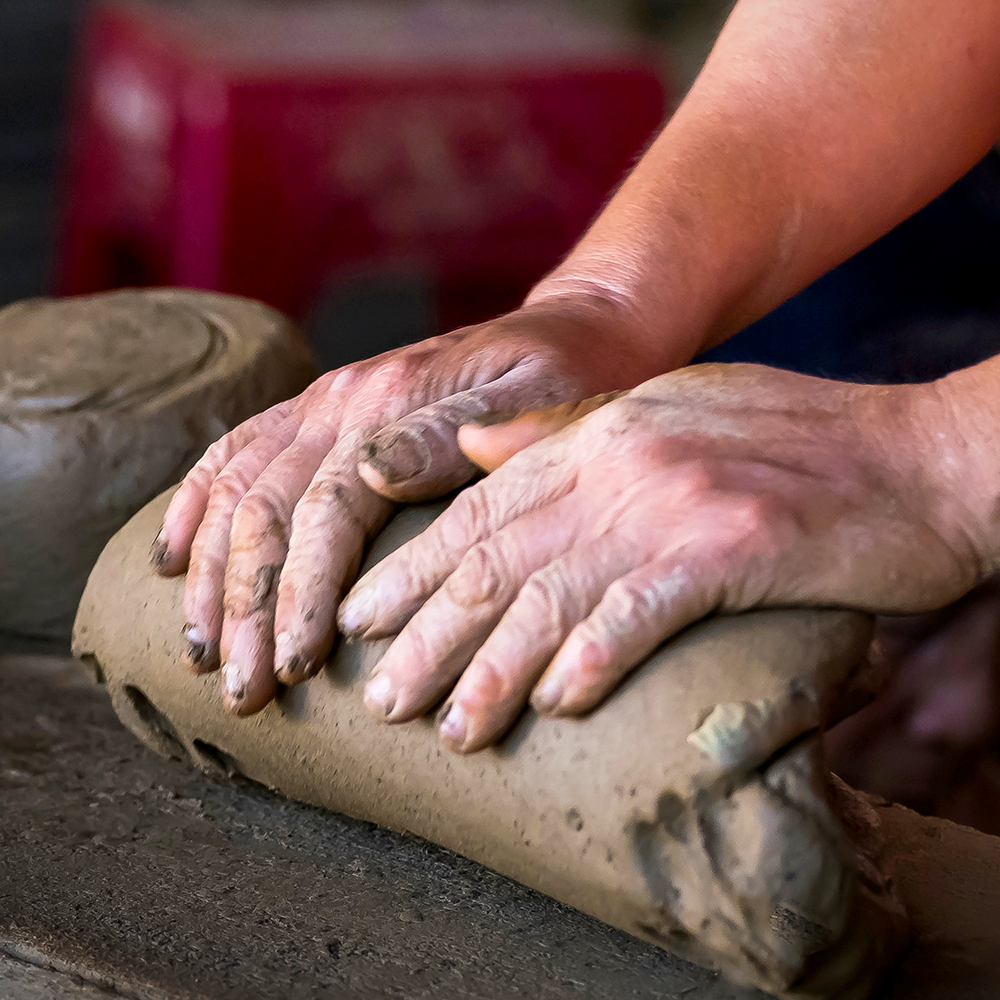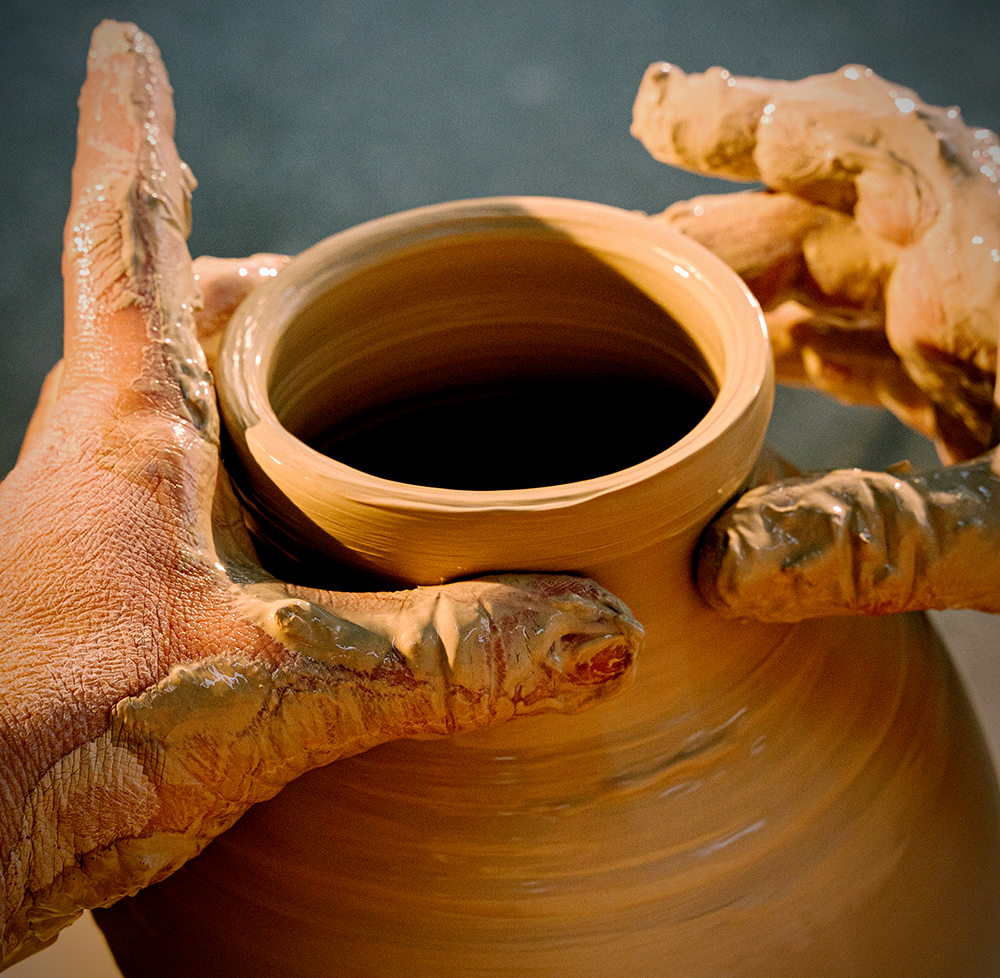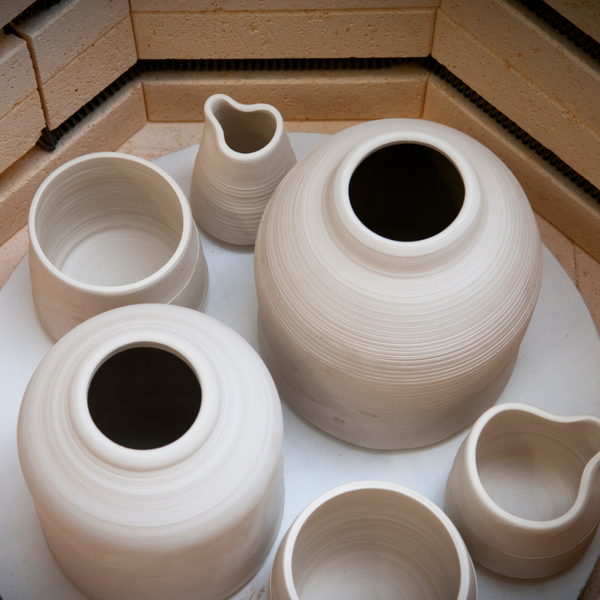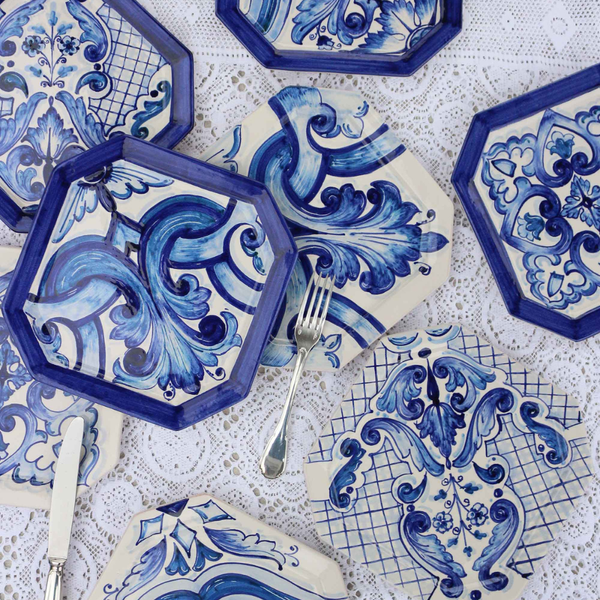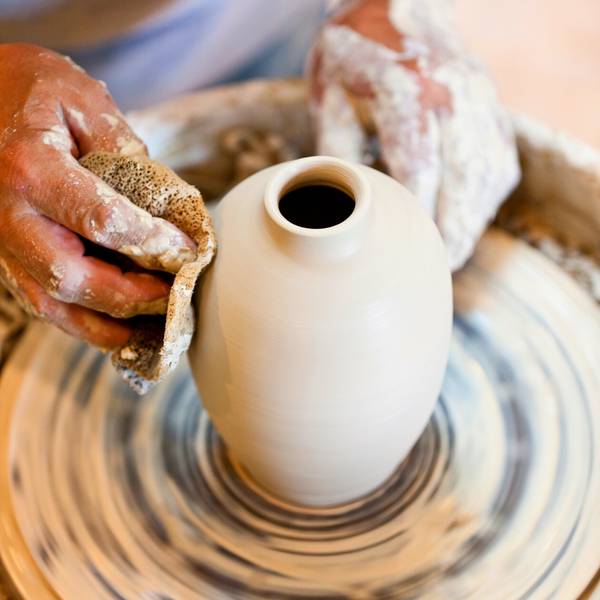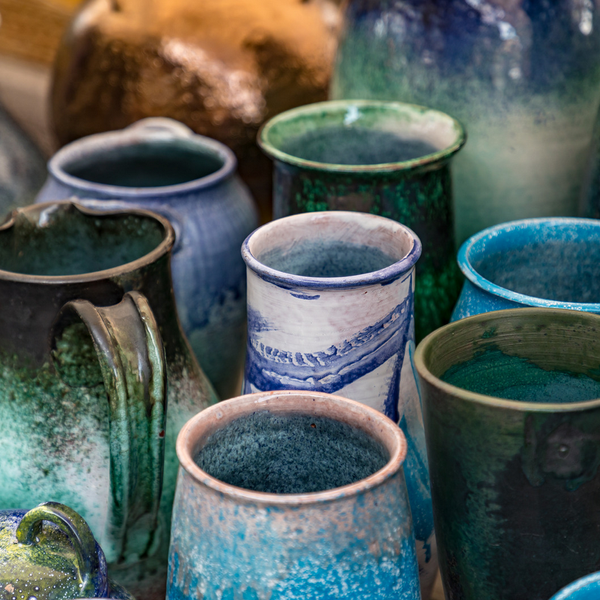Welcome to the whimsical world of clay and creativity—a space where the earthy touch of terracotta meets the mesmerizing spin of the potter's wheel!
When it comes to pottery, two primary techniques emerge: hand building and throwing clay.
But what sets them apart?
Hand building involves molding and shaping clay using only the hands and simple tools, granting the ability to create a broad array of shapes, textures, and sizes.
Throwing clay, or wheel throwing, conversely, employs a pottery wheel to produce symmetrical and circular forms with uniformity and precision.
Each method carries distinctive advantages that cater to different artistic visions, skills, and desired outcomes in ceramic creation.
This article delves into these differences, providing a clear understanding for both novices and seasoned potters looking to refine their craft.
Whether you're a curious novice with an inclination to mold or a seasoned potter with hands that speak the language of clay, this journey through the heart of pottery techniques will unveil the marvels of shaping earthenware.
In the dance of the potter's hands, two distinct rhythms emerge: the free-flowing ballet of hand building and the disciplined twirls of throwing clay.
Join us as we delve into the tactile tales of these techniques, and uncover how they craft not only stunning vessels but also the artisan's very soul.
Let's spin the wheel and venture into the age-old tradition that continues to capture imagination!
Key Takeaways
- Hand building offers versatility in creating unique shapes and intricate textures, is more accessible for beginners due to its lower cost and greater control, and allows for complex, artistic work.
- Wheel throwing requires skill and practice for mastering symmetrical forms and offers efficiency in creating large quantities of consistent pottery, typically preferred for mass production due to its speed.
- While each technique has its advantages, choosing between hand building and wheel throwing depends on personal preference, desired pottery forms, and the potter’s creative vision. Classes are available for beginners to learn both techniques, which can be combined for greater creative freedom.


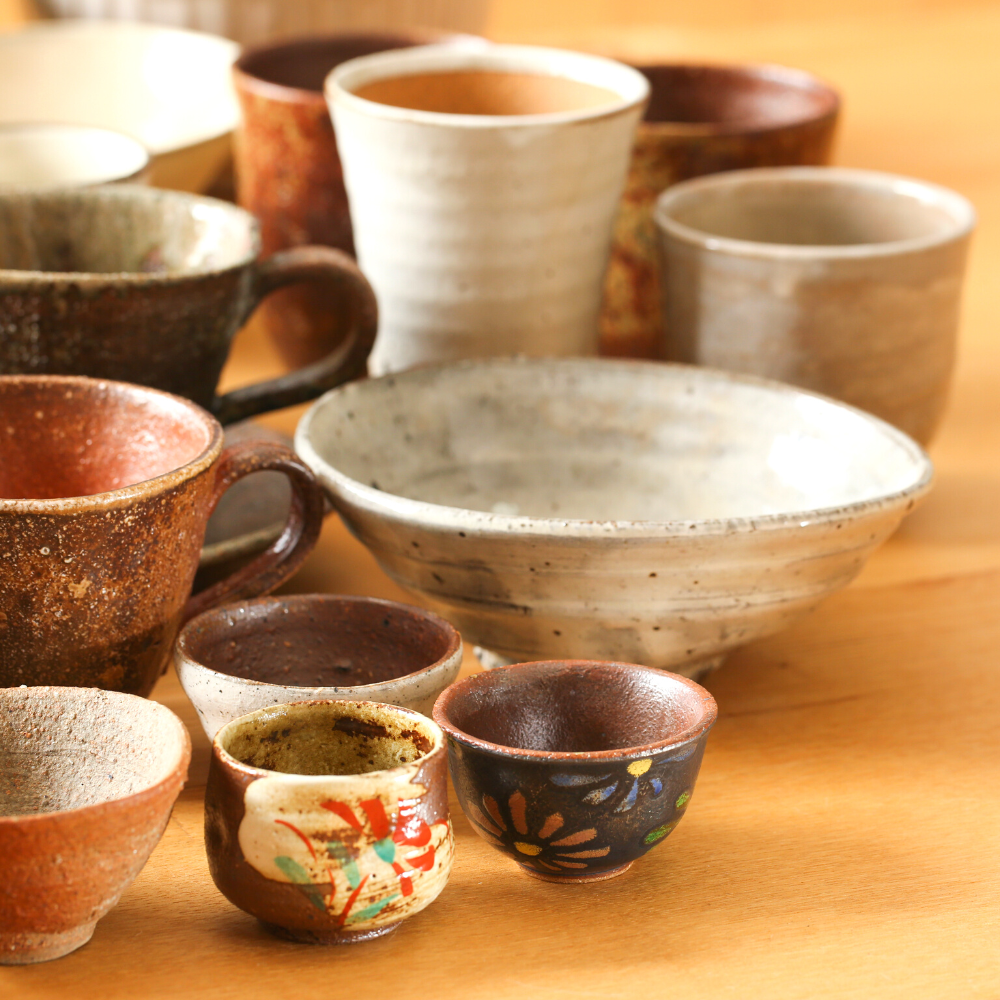
The Basics: Hand Building vs. Wheel Throwing
Pottery creations are typically accomplished through one of two fundamental techniques: hand building or pottery throwing.
Hand building techniques allow for the creation of a wide variety of shapes, including square and irregular shapes, which are not possible with wheel throwing.
On the other hand, wheel throwing, performed on a spinning pottery wheel, requires the potter to mold the clay into symmetrical forms using skill and practice.
The choice between these techniques can be influenced by the type of clay, as some clays are more suited to one method over the other, and the frequency of clay hits when you throw clay.
Defining Hand Building in Pottery
A versatile pottery technique, hand building enables the crafting of various shapes and detailed textures using simple pottery tools and the human hand.
It allows potters to produce functional tableware, vessels, and sculptureswith the freedom to incorporate intricate details like angles and geometrical forms not easily achievable on the pottery wheel.
Beginners often start with pinch pots to get acquainted with clay while earthenware and stoneware clay are recommended due to their workability and plasticity, helping to prevent shrinkage and cracking during firing, especially useful for larger pieces.
Hand-building facilitates the creation of unique, one-of-a-kind pieces, a feat not so easily achieved with wheel throwing.
Understanding Wheel Throwing
Mastering wheel throwing requires skill and practice. Here are some key steps to follow:
- Center the clay on the wheel.
- Mold the clay into the desired shape using various tools and techniques.
- Understand how the clay on the wheel responds to the potter’s applied forces.
- Practice to achieve symmetrical and controlled clay shaping.
By following these steps, you can improve your wheel throwing skills and create beautiful throw pottery.
Effective wheel throwing technique relies on correct body positioning and the use of the weight of the skeleton rather than muscle strength to prevent injury and improve control.
Mastering wheel throwing is an art, one that involves a delicate dance between the potter’s hand and the spinning clay on the wheel head, all while maintaining the right wheel speed.
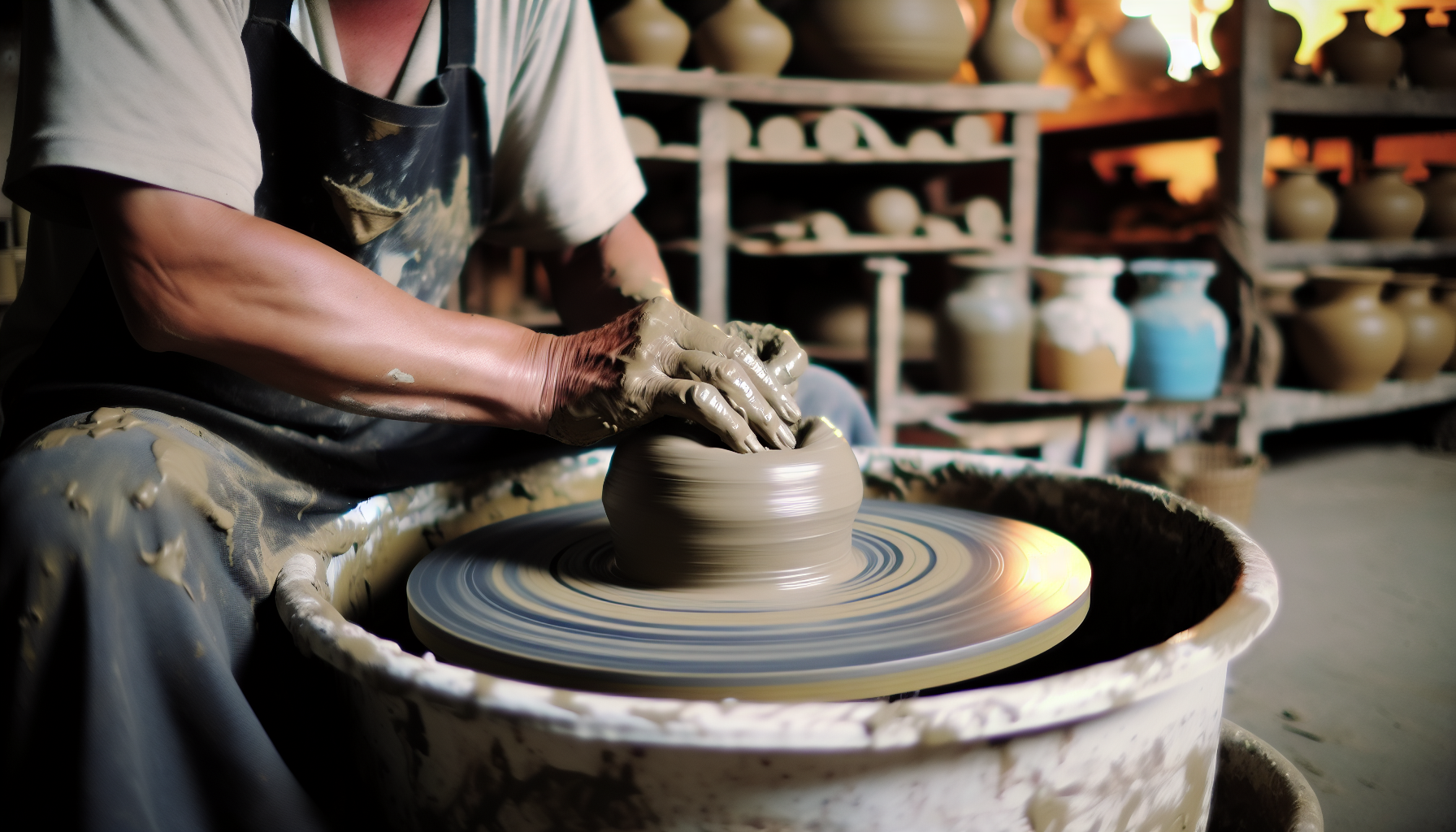
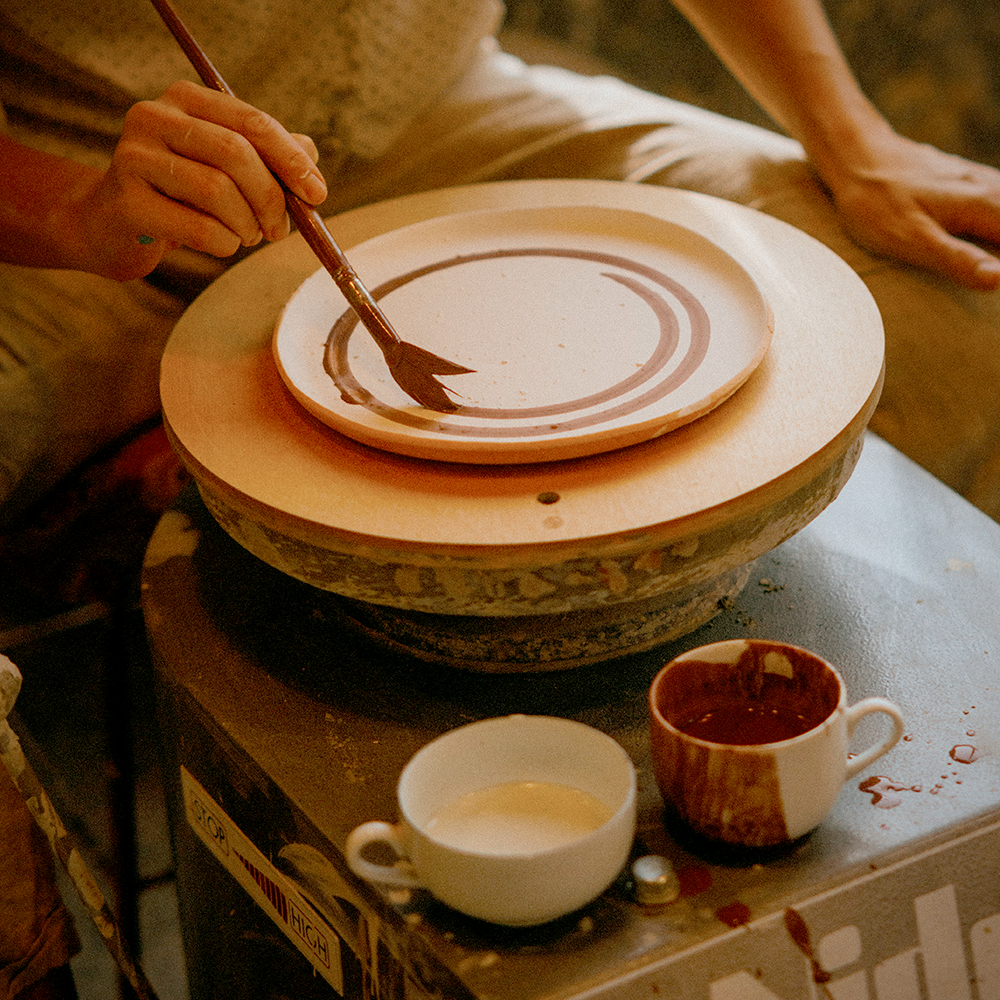
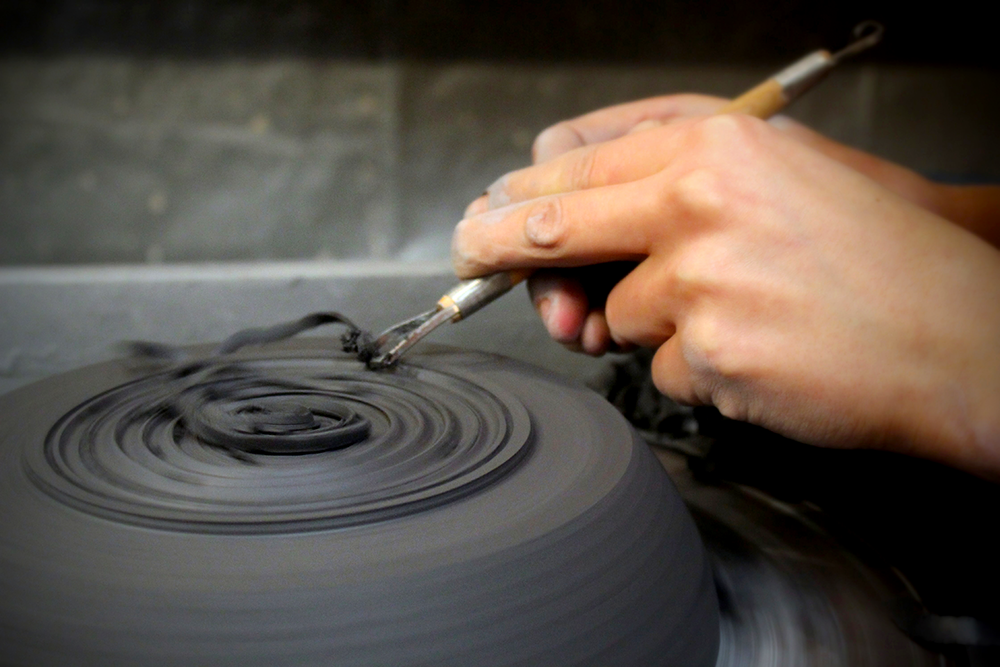
The Art of Shaping Clay by Hand
Hand building, dating back to 28,000 BCE, is one of the earliest pottery techniques, offering a tangible connection to our past.
The primary types of handbuilding in pottery are:
- Pinching, where clay is shaped by pressing and forming with the fingers
- Coil building, in which rolled coils of clay are layered and joined to build volume
- Slab building, using flat pieces of clay to construct forms.
Beginners can start with pinch pots, providing a hands-on experience, while slab construction allows for experimentation with texture and form.
The versatility of hand building techniques facilitates the creation of complex, artistic designs, offering a rich playground for creativity and artistic expression.
Mastering the Potter's Wheel: An Overview
Wheel throwing, a craft steeped in tradition and technique, involves the following steps to find pottery throwing mastery:
- Centering clay on a spinning wheel
- Shaping the clay by coning up and down while the wheel spins
- Using techniques like pulling, pushing, and wedging to align the clay’s platelets for easier shaping
This process requires practice and skill to master.
Once centered, the shaping process involves making a divot, opening the clay to create the vessel’s floor, and using fingers and hands to push and pull the clay outward and upward to form the desired shape.
Essential tools for shaping include wire tools for cutting, a variety of sponges for smoothing, and ribs made of various materials such as wood, metal, and rubber for forming and finishing, while knives aid in cutting and design work.
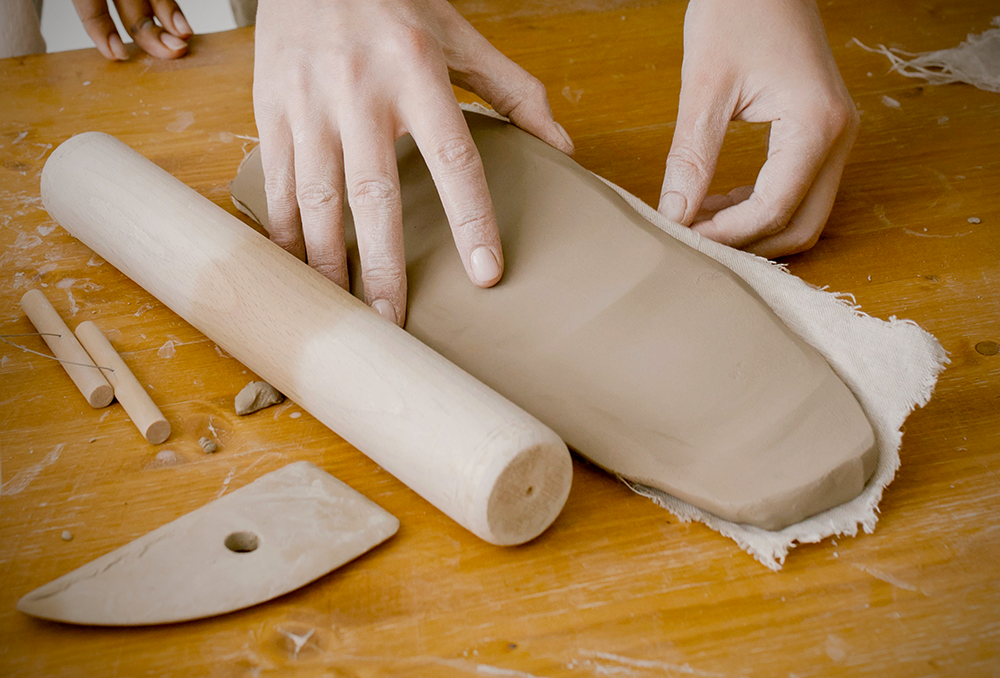
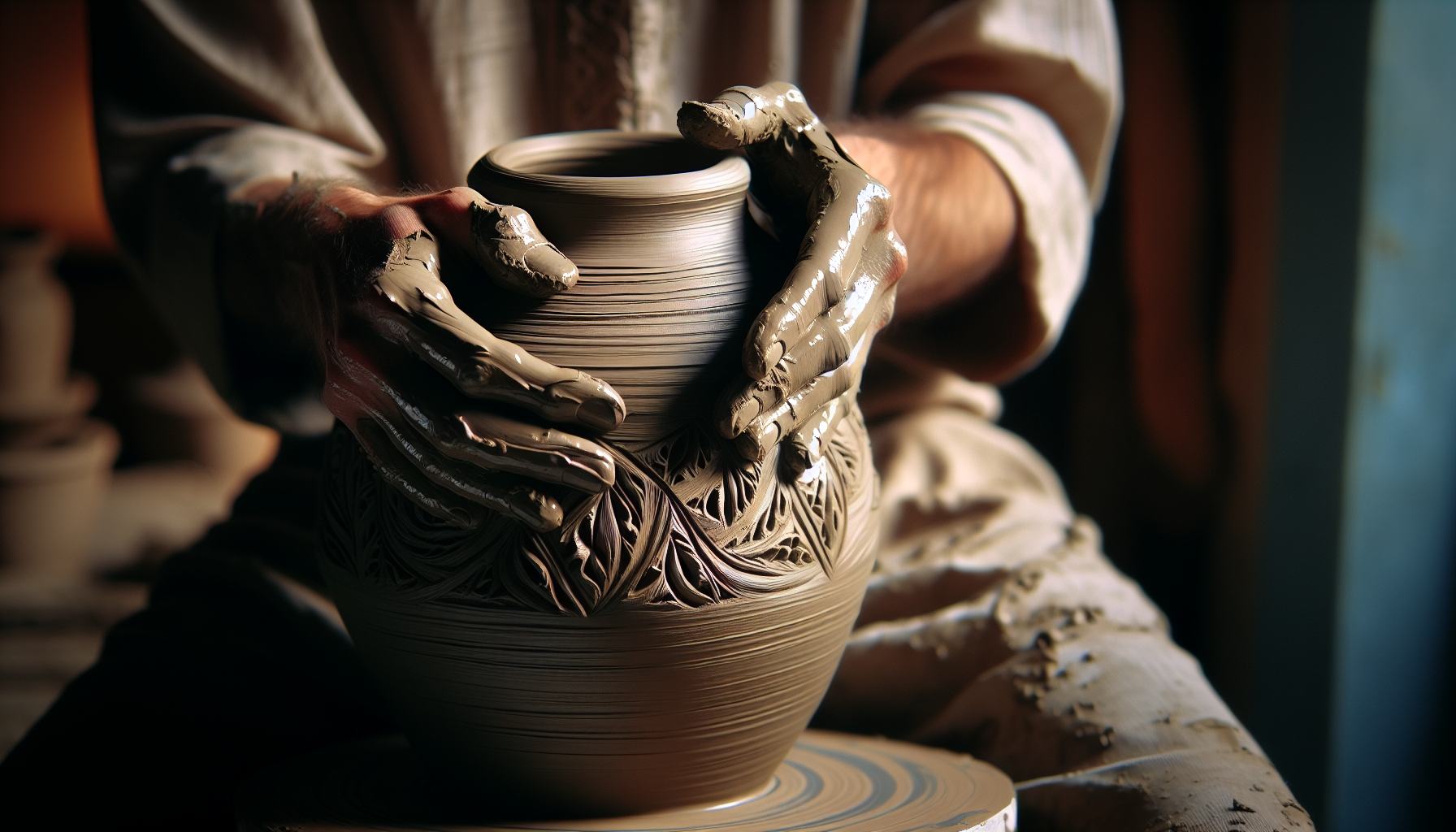
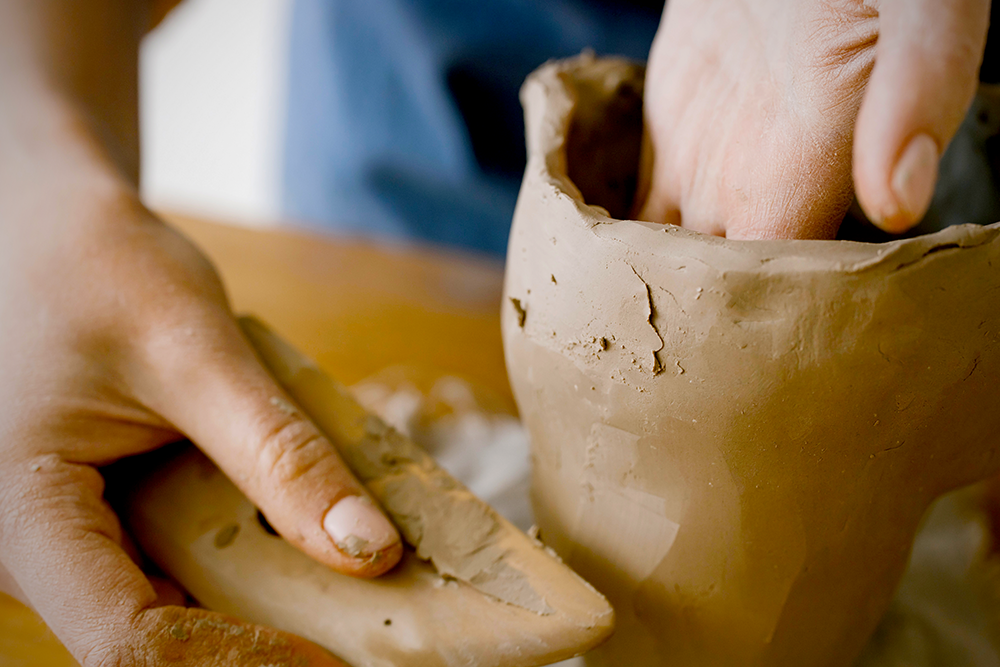
Tools of the Trade: Hand Building vs. Throwing
The tools required for hand building and wheel throwing differ significantly, both in terms of variety and cost.
Hand building typically has a lower startup cost ranging from $50 to $100 as opposed to wheel throwing where pottery wheels can range from $400 to $2000, making it more accessible for beginners.
Essential tools for hand building include basic materials such as clay, a wire cutter, pin tool, score tool, and a variety of sponges and knives for refining work.
On the other hand, wheel throwing calls for a pottery wheel, along with additional tools for shaping, trimming, and finishing the pottery piece.
Regardless of the technique chosen, the right tools can greatly enhance the pottery-making process, allowing potters to bring their creative visions to life.
Control and Creativity: More Control
Handbuilding, also known as the hand building technique, grants unparalleled control over the clay, opening doors for intricate and detailed designs that may not be as feasible with wheel throwing.
This technique provides the flexibility to mend small imperfections and strengthen weak areas, leading to more intricate and sturdy ceramic pieces.
Serving as an excellent starting point for beginners, hand building gives a superior command over the clay, aiding in the acquisition of basic pottery skills.
The hand building process fosters a deeper personal connection to the work, as the potter’s direct interaction with the material enriches the creative experience.
Speed and Efficiency: Is It Time Consuming?
Due to its speed and efficiency in crafting perfectly round shapes, wheel throwing often outshines hand building in efficiency, making it a favored technique for mass production.
The advantages of wheel throwing include:
- Speed: The potter’s wheel allows for quick centering and the ability to create larger pieces more quickly.
- Precision: The wheel enables potters to create perfectly round shapes with ease.
- Consistency: The repetitive motion of wheel throwing helps potters maintain consistent shapes and sizes.
- Time-saving: The speed of the wheel and the ability to create multiple pieces at once contribute to the time-saving advantage of wheel throwing.
These advantages make wheel throwing a popular choice for potters looking to produce a large quantity of pottery efficiently.
While hand building a single piece can take up to three weeks or more, wheel throwing typically requires less time, highlighting a clear speed advantage in the wheel throwing process.
Overall, wheel throwing is generally considered to be less time-consuming than hand building, particularly when factor in the wheel’s ability to produce symmetrical forms rapidly.
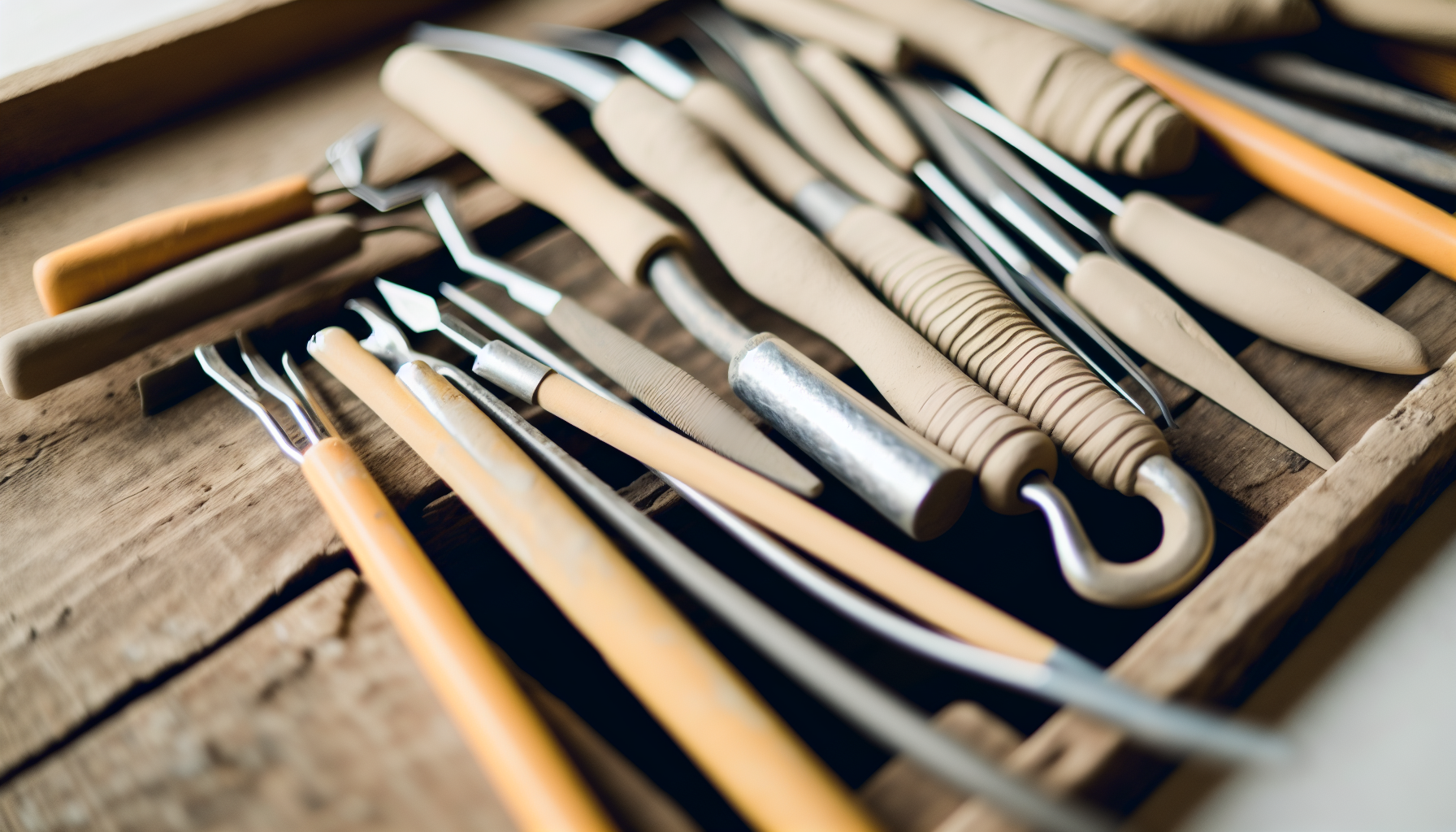


Aesthetic Appeal: Hand Built vs Wheel Throwing
The techniques utilized in creating pottery often mirror the aesthetic appeal of the pieces.
Wheel-thrown pottery is recognized for its professional and standard appearance, contrasting with the more rustic and detailed personality of hand-built pottery.
Hand-building techniques facilitate the creation of unique shapes and intricate details, such as irregular forms, complex textures, and a variety of surface treatments that are difficult to replicate on a wheel.
Each hand-built piece can have a distinctive personal touch that mirrors the potter’s individual style, further differentiating it from the similar appearance of wheel-thrown items.
On the other hand, although wheel-thrown pottery often has a more uniform and clean finish with consistent and smooth surfaces, it may lack the individualized artistry seen in bespoke hand-built ceramics.
Versatility in Pottery: Which Offers More?
Offering greater artistic freedom, hand building techniques in pottery allow for crafting unique shapes and designs, such as square and irregular forms, not achievable with a pottery wheel.
Hand building provides more adaptability, allowing for complex, artistic work, and the use of various types of clays, including polymer clay.
On the other hand, wheel throwing enables quicker replication and mass production of items due to its efficiency in producing multiples of the same form.
Depending on the desired object shapes, wheel throwing is preferable for cylindrical forms, while hand building is suited for more irregular and angular forms.
Both techniques offer numerous possibilities, but the choice often comes down to the specific needs and creative vision of the potter.
Learning Curve: Beginners and Pro Potters
Considered easier for beginners, hand building provides superior control over the clay and the ease to make improvements, thereby facilitating the understanding of how clay responds to manipulation.
On the other hand, wheel throwing requires beginners to learn coordination and master skills such as centering the clay, which can be frustrating but essential for creating symmetrical pottery, analogous to learning to play an instrument or driving a car.
Experienced potters demonstrate mastery in both hand building and wheel throwing by tackling larger-scale clay projects and creating complex, precision forms, sometimes facing unique challenges that require advanced skills.
Regardless of the level of expertise, learning and mastering both techniques can greatly enhance a potter’s creative possibilities and overall skill set.



Making Your Choice: Hand Building & Throwing
The choice between hand building and wheel throwing techniques often hinges on personal interests and the desired forms of pottery.
For beginners, experimenting with both hand building and wheel throwing techniques can provide insight into which approach best matches their interests and desired pottery forms.
Furthermore, merging hand building and wheel throwing techniques can offer potters greater creative freedom and precision, allowing for the creation of intricate designs not possible with a single method alone.
By using a potters wheel alongside these techniques, artists can achieve even more impressive results.
Ultimately, the choice between hand building and wheel throwing is not a binary one, but rather a spectrum of possibilities that potters can explore and experiment with on their pottery journey.
Finding Classes: Learning Ceramics Techniques
Numerous studios, community centers, and workshops offer classes for those interested in learning hand building and wheel throwing pottery techniques.
Institutions like The Slightly Curious Studio and HRCA provide workshops and classes introducing beginners to the fundamentals of both hand building and wheel throwing pottery techniques,.
The Crucible’s Ceramics Department and The Ceramicists run workshops, classes, and courses for beginners to develop their hand building skills, suggesting a progression in the learning process.
For wheel throwing, classes with professional potters offer hands-on experience and step-by-step guidance.
Regardless of the technique you choose to learn, remember that pottery is a journey of creativity, patience, and continual learning.

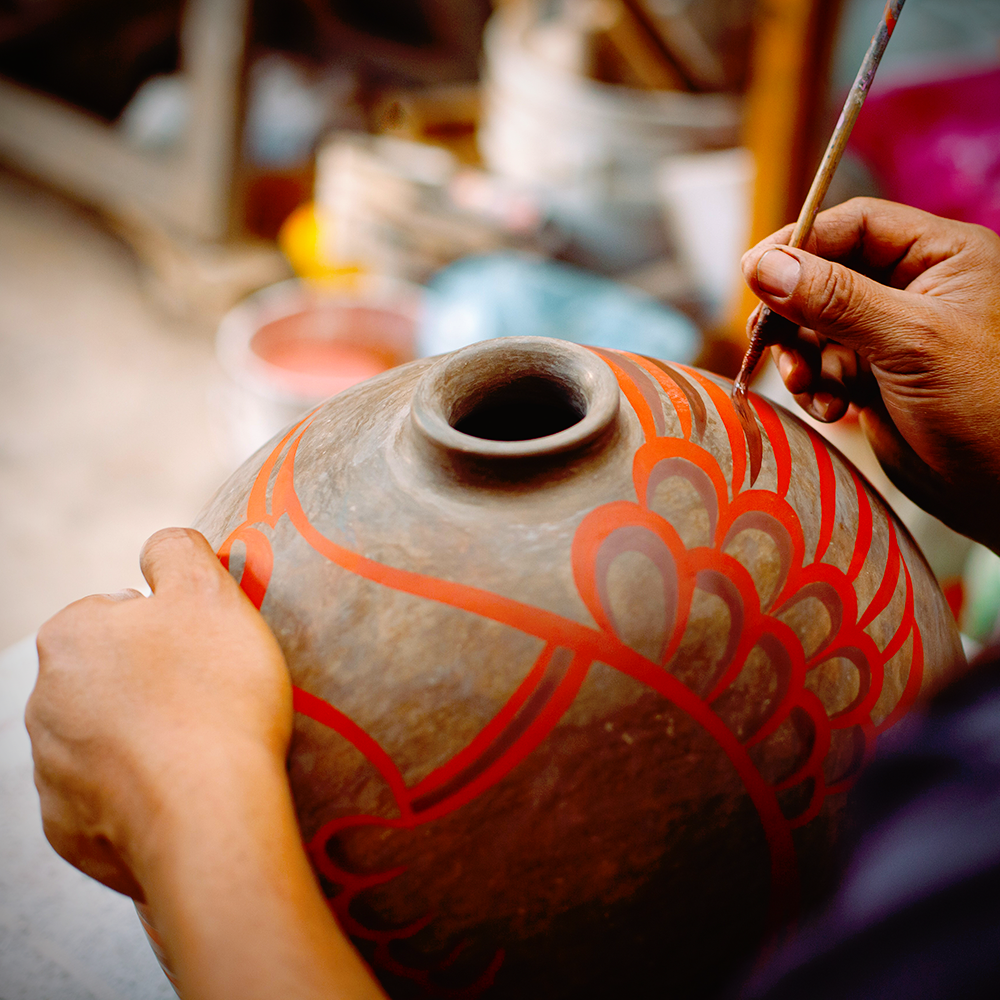

Versatility of Pottery Techniques
In this exploration of pottery techniques, we’ve delved into the world of hand building and wheel throwing, two primary pottery techniques that offer unique opportunities for creativity and craftsmanship.
Both hand building and wheel throwing techniques offer unique advantages for potters, allowing for a wide range of creative possibilities.
Each technique has its unique characteristics, with hand building providing a more tactile, intimate experience and the ability to create intricate, unique forms, while wheel throwing offers a sense of rhythm and fluidity, ideal for creating symmetrical, uniform pieces.
While the choice between hand building and wheel throwing ultimately comes down to personal preference, combining both techniques can enhance one’s expertise in pottery making.
Whether you’re a beginner seeking to dip your toes into the world of pottery or an experienced potter looking to expand your skills, understanding both hand building and wheel throwing can enrich your pottery journey.
Remember, in pottery, the journey is as important as the destination.
Embrace your creativity, experiment with different techniques, and above all, enjoy the process of transforming simple clay into beautiful pieces of art.

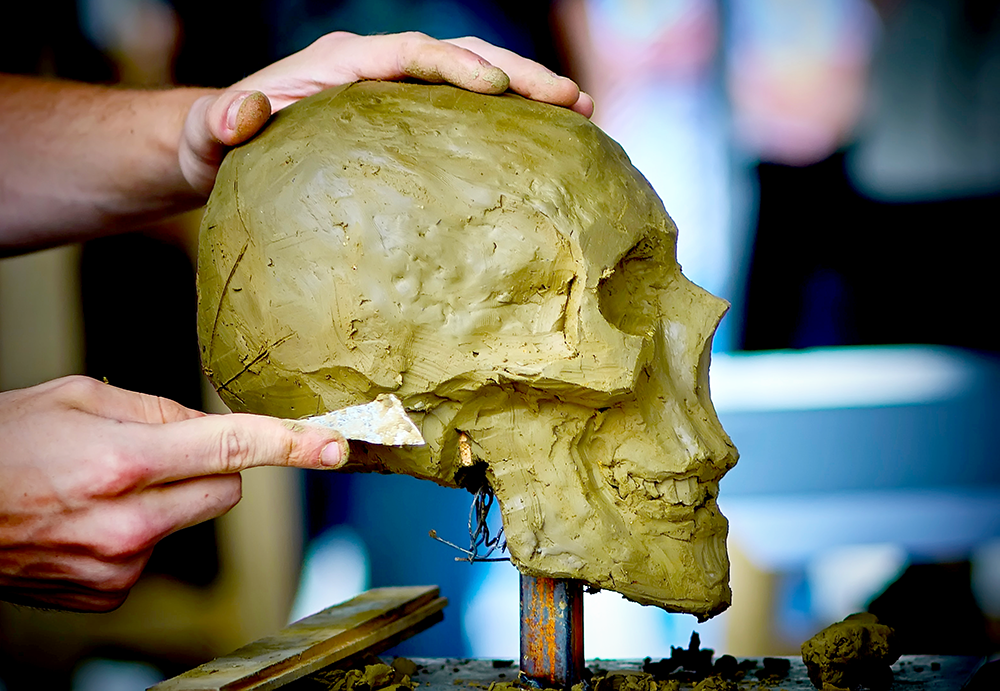

Pottery FAQs
If you still have questions about pottery techniques and processes, here are some frequently asked questions to help you along your journey:
What is the difference between hand building and throwing?
Hand building allows for more creative freedom and flexibility, enabling the creation of unique shapes and sculptures unlike throwing, but it is more time-consuming and challenging to replicate items.
What is hand throwing clay?
Hand throwing clay refers to the process of creating forms with clay and your hands, without using a throwing wheel, which was the only method available before the invention of the ceramic wheel.
What are the advantages of hand building over wheel throwing?
Hand building offers greater control over the clay, enabling detailed and intricate designs, as well as adaptability to various types of clays.
What tools are necessary for hand building and wheel throwing?
To hand build, you will need clay, wire cutter, pin tool, score tool, sponges, and knives for refining work. For wheel throwing, a pottery wheel and shaping, trimming, and finishing tools are necessary.
Which technique is easier for beginners?
For beginners, hand building is generally considered easier than wheel throwing as it offers greater control over the clay and allows for easier adjustments. It helps in understanding how clay responds to manipulation.



Interested in jumping into the world of clay? Check out Hana Ceramics' video!
Want even more content about creativity and art?
Be sure to check out all of our creative chronicles!
Love pottery and working with clay?
Check out some of our other ceramic articles:
